By this time, they would’ve already set off to Kutch or getting ready for the journey. When we met them in December, they were busy feeding on the algae in the Sewri mudflats.
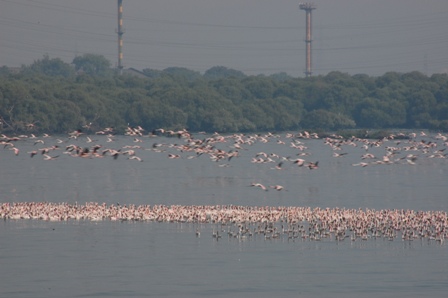
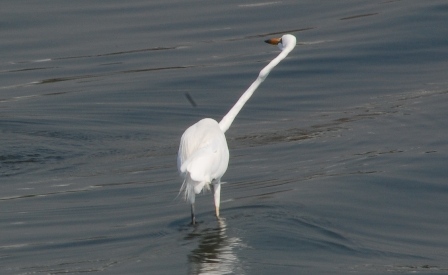
Flamingos migrate to Maharashtra during winter after spending the breeding season in Kutch, Gujarat. Sewri, a port area in Mumbai, is one of their favourite hangouts. How did they choose to come to this derelict area? Maybe, the rich algae found in the muddy tracts that get exposed during low tides. Feeding on these algae that have a carotenoid pigment, these migratory birds turn rich pink by the time they are ready to move to Kutch for breeding.
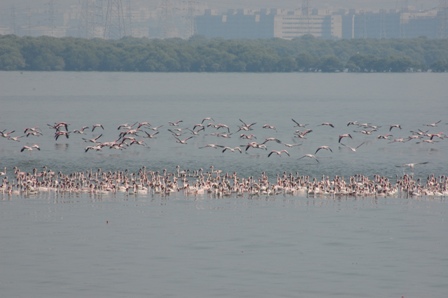
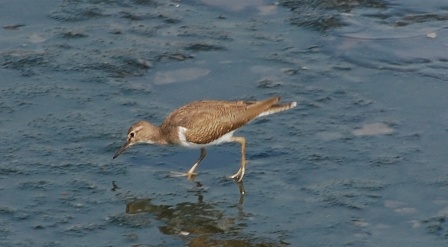
We reached Sewri in the morning during high tide. We could see a large flock floating in the water. As time passed, thousands more joined the gang. Asif from Nature Knights led us to a shaded spot on a barge that was being built. We would’ve got terribly tired waiting till noon in the hot sun and would not have stayed for long. Spreading our plastic sheet, we sat there with our cameras, binoculars, water, and snacks.
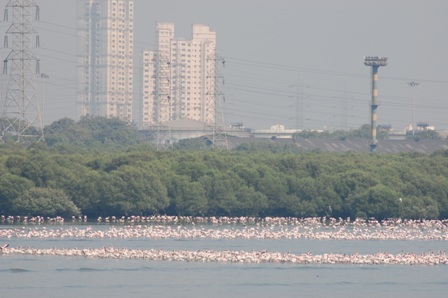
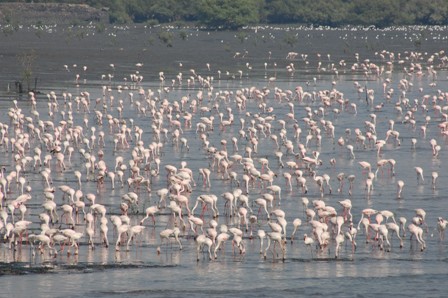
Slowly, as the tide started receding, the birds moved closer to us. By around 12, they were just below us rubbing their beaks in the mud and filtering out algae from the water using the tiny hairs that line the inside of their bills. We watched them in awe in utter silence for some time, when a boisterous group of people scared them. As they took flight, we cursed the noisy group and wound up the birding session organised by Nature Knights.
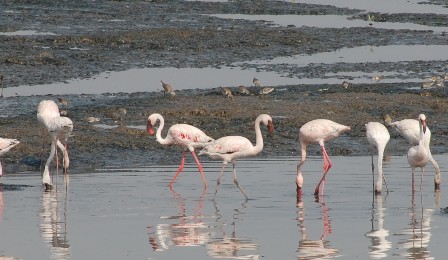

The effluents from the chemical and oil companies around Sewri have reportedly been polluting the water in this area. And this polluted water produces the algae, which is a staple food for flamingos. Isn’t it a bit of contradiction? Conservation supported by pollution! However, studies reveal that the chemical content of the water has been steadily rising and it could be harmful to the flamingos in the long run.
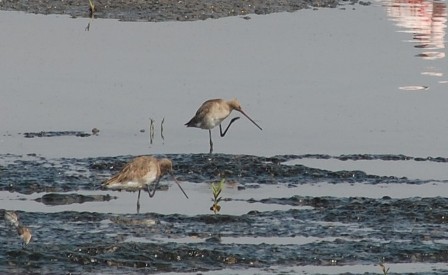
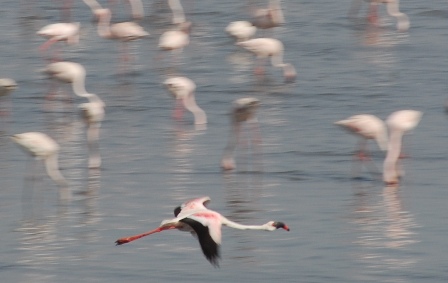
Two types of flamingos come to Sewri—lesser flamingos in large numbers and greater flamingos in small numbers. Size alone differentiates them. Flamingos are grey when they are born and turn white as they become juveniles. The adults, as they get ready to breed, gradually turn pink.
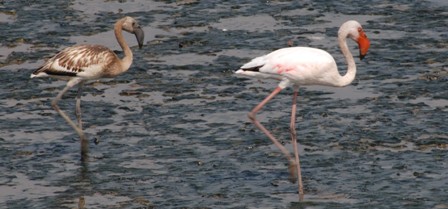
Check out the tide time table here and plan your visit accordingly.
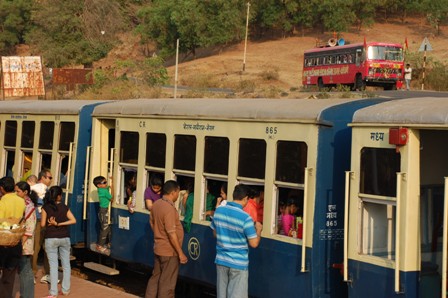
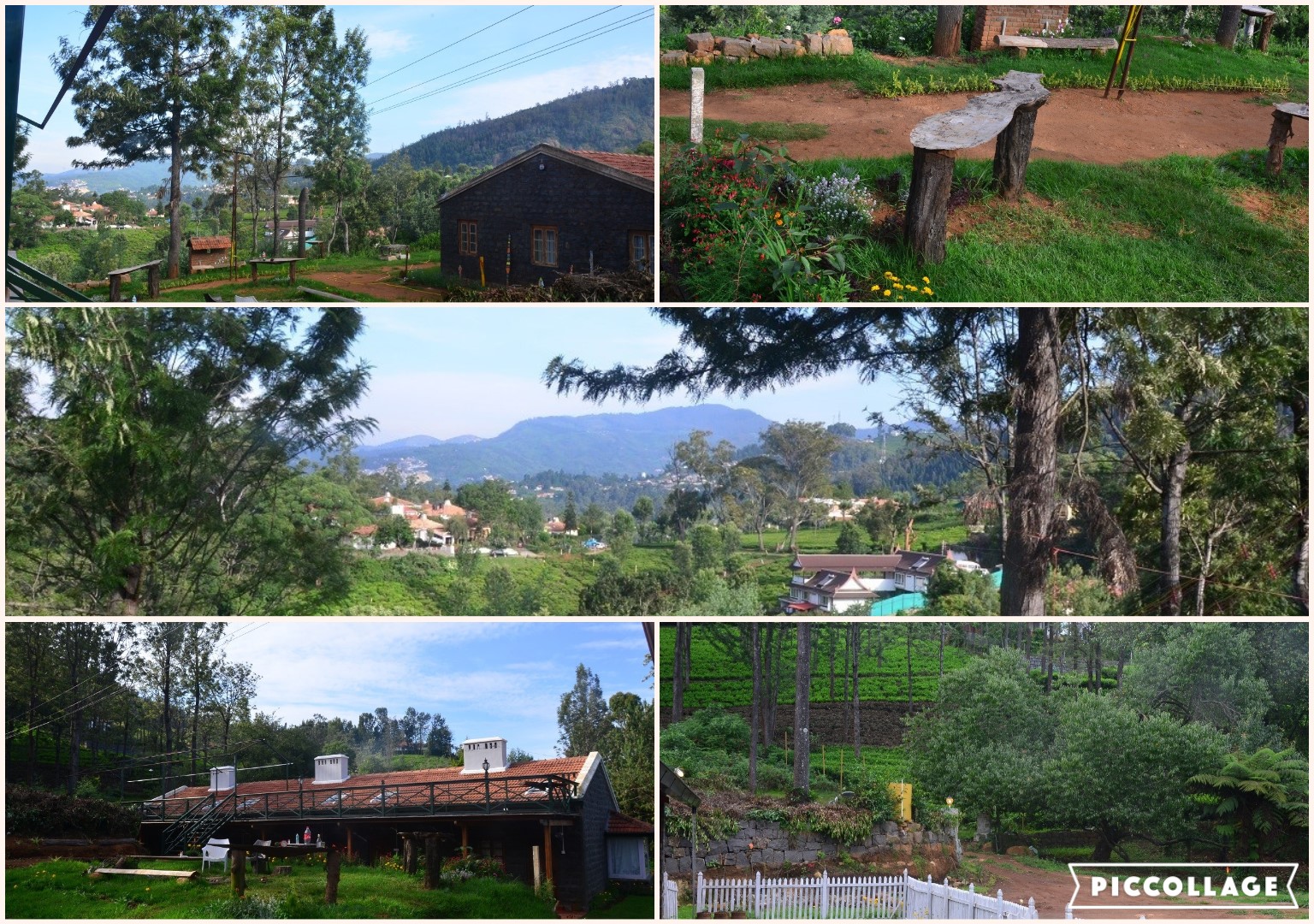
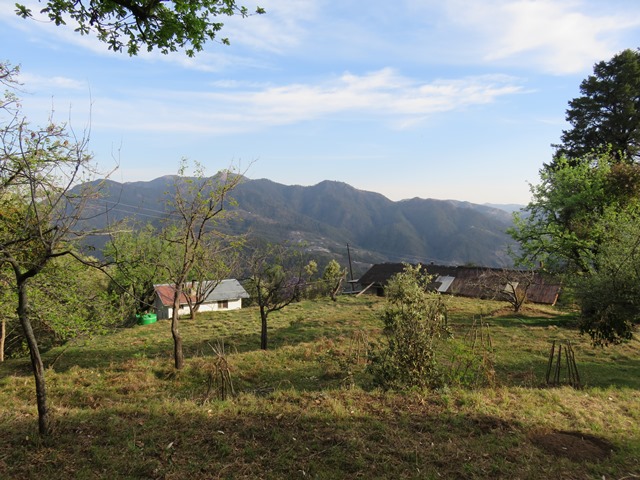
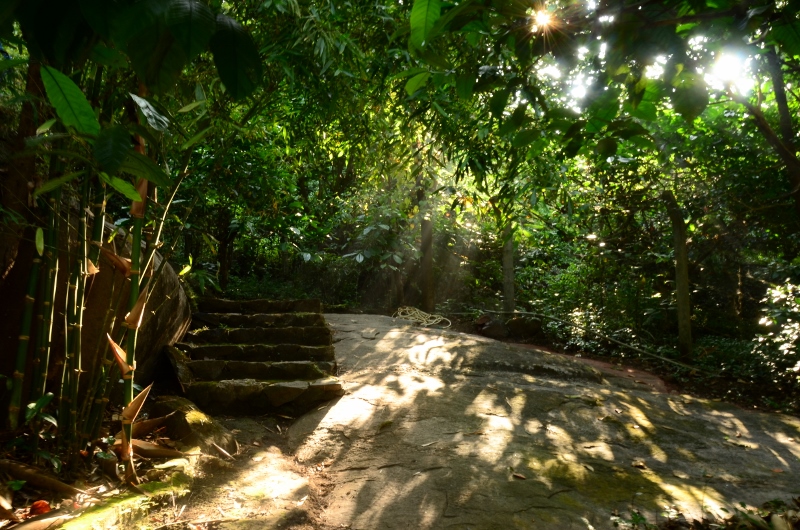
This is great, though I have come across this quite late myself. I have been looking forward to doing this visits since long, exploring Sewri area.
Where exactly do you get such view from in Sewri?
Have read your other stories. Keep them coming.
Anu: Yes, posting it very late. 🙂
Manjusha: Thanks. 🙂
Hi Bindu,
I was looking forward to see the flamingoes but i am a lil too late this year i guess. However, your writing and pictures have temporarily compensated for my loss. Your enthusiasm for visiting places and writing about them is really commendable.
Keep them coming 🙂
Great pics! posting them a bit late, arent you?????? the mudflats really seem to be transformed when these birds arrive!
and yes, it is fascinating to see what we consider rubbish becoming food for these birds… at least we can reduce the other chemicals which threaten them!